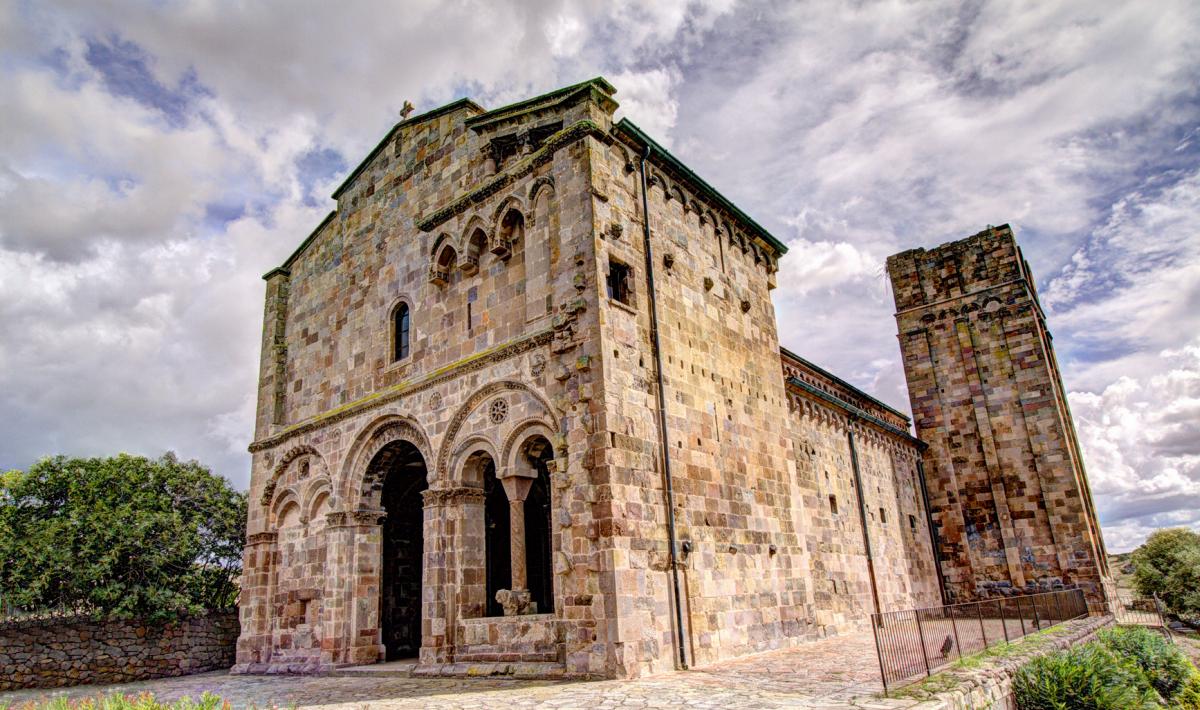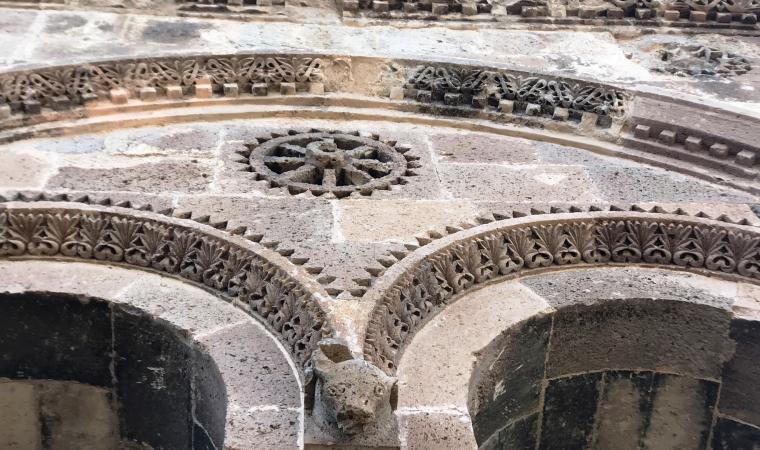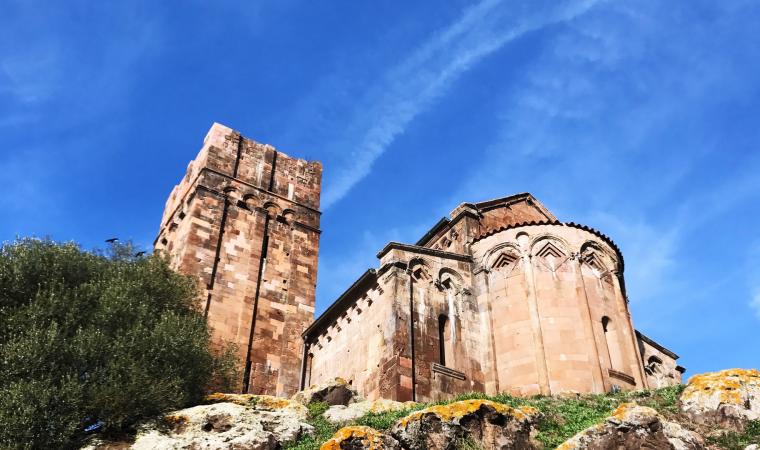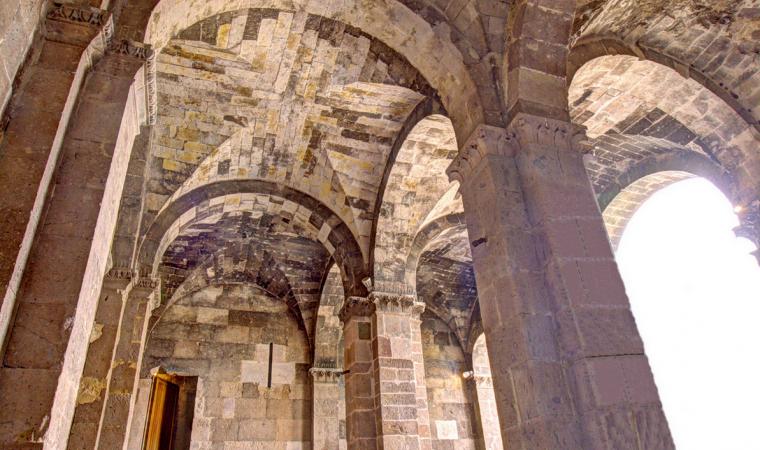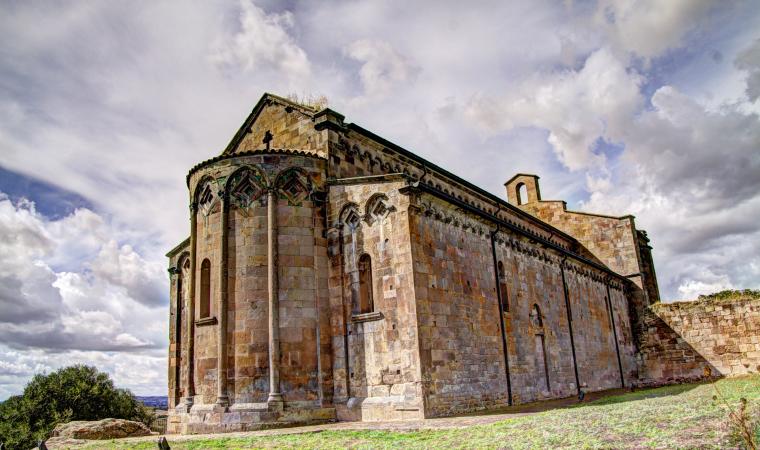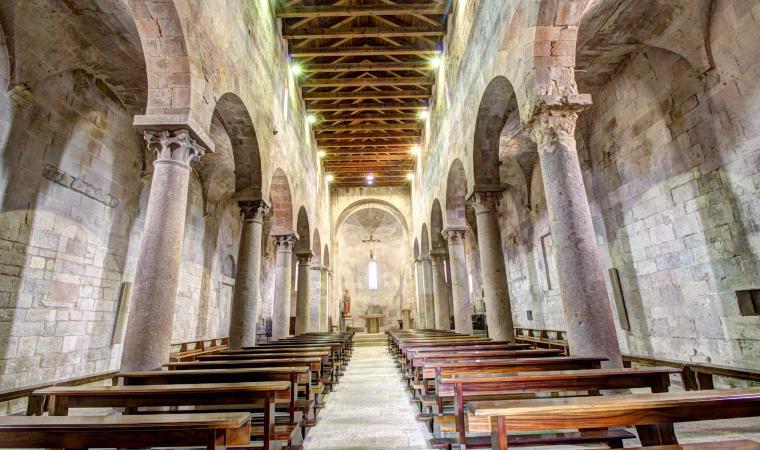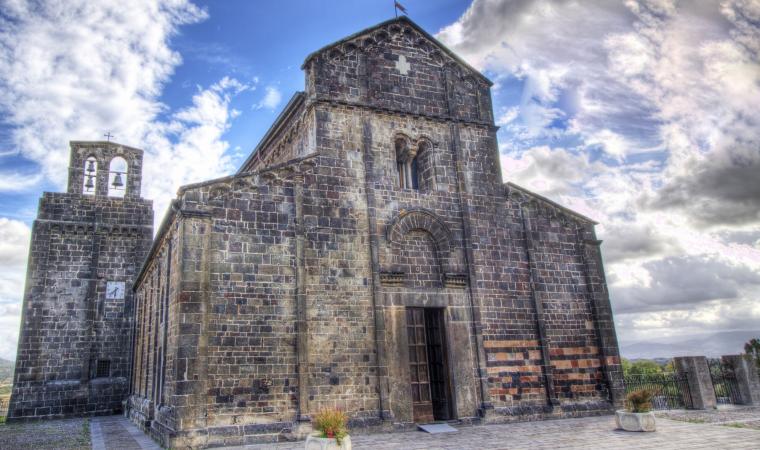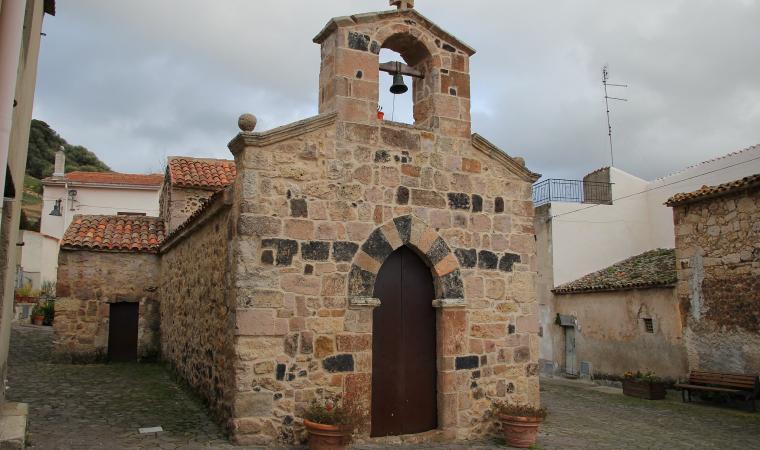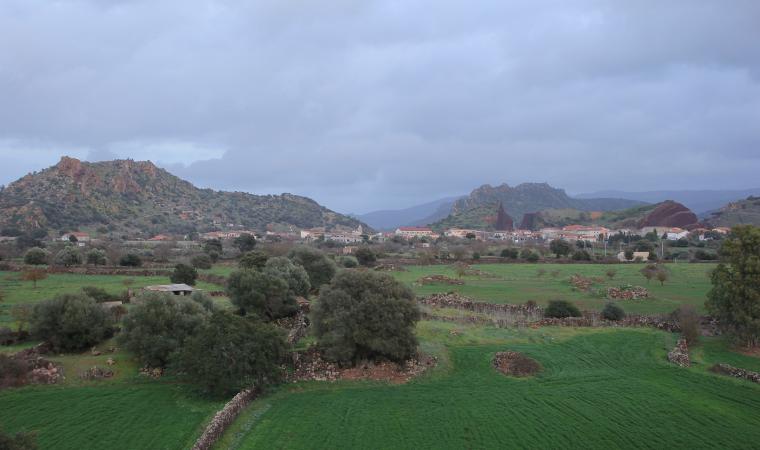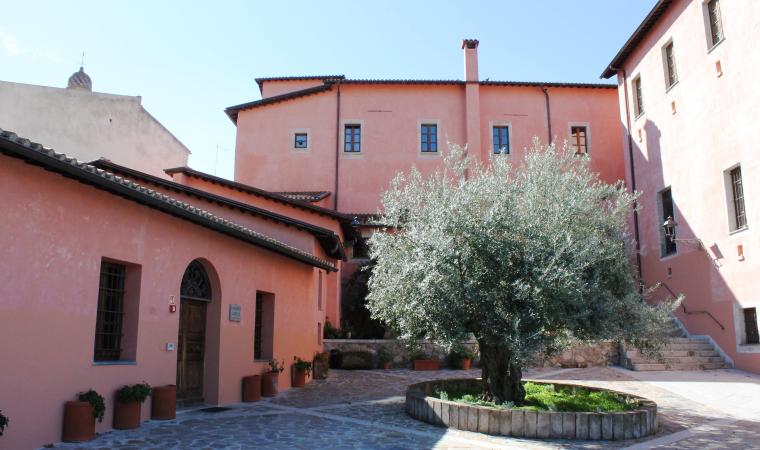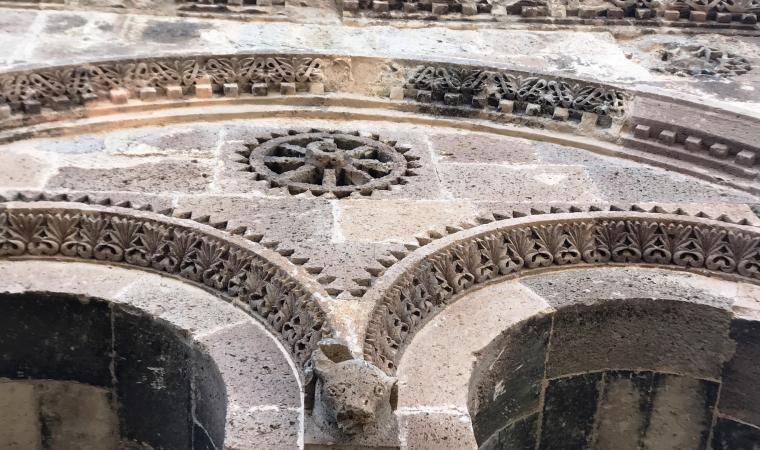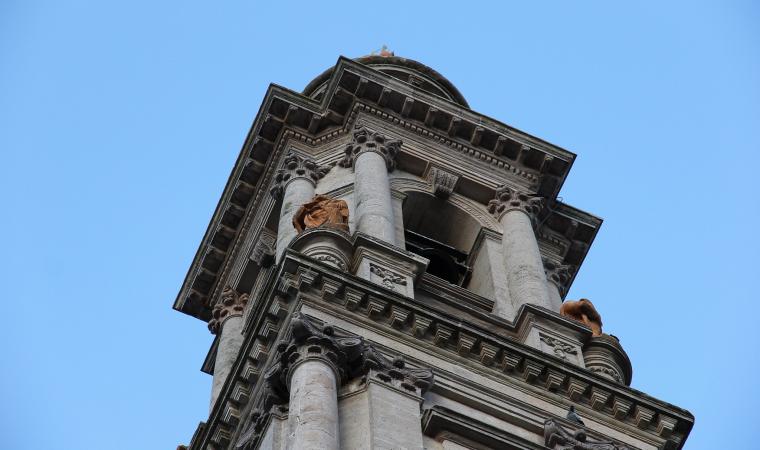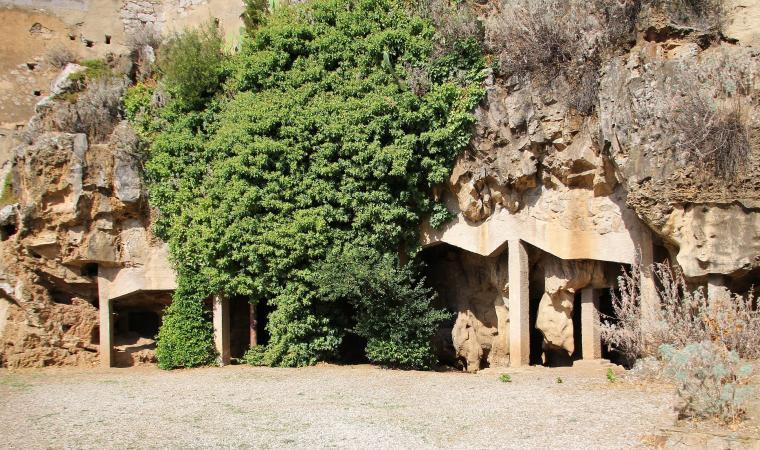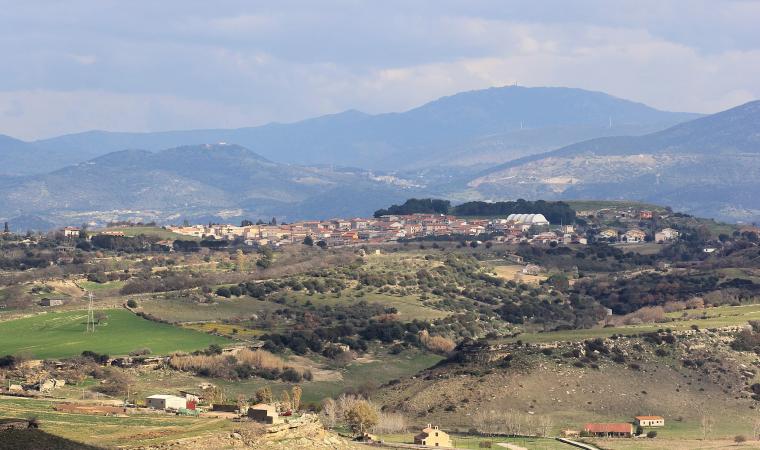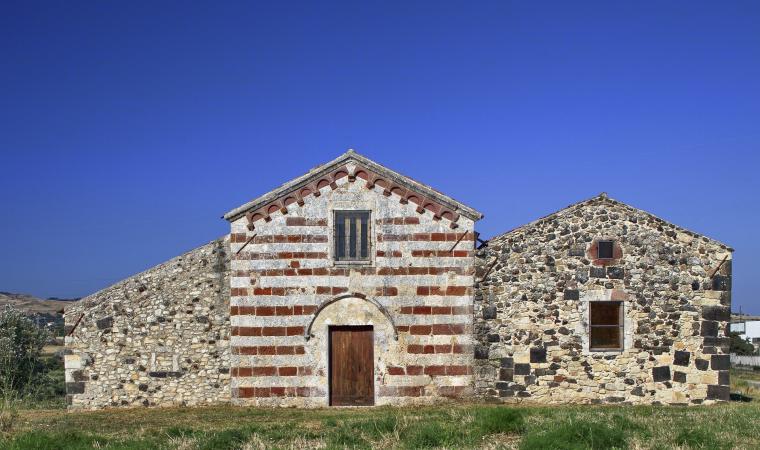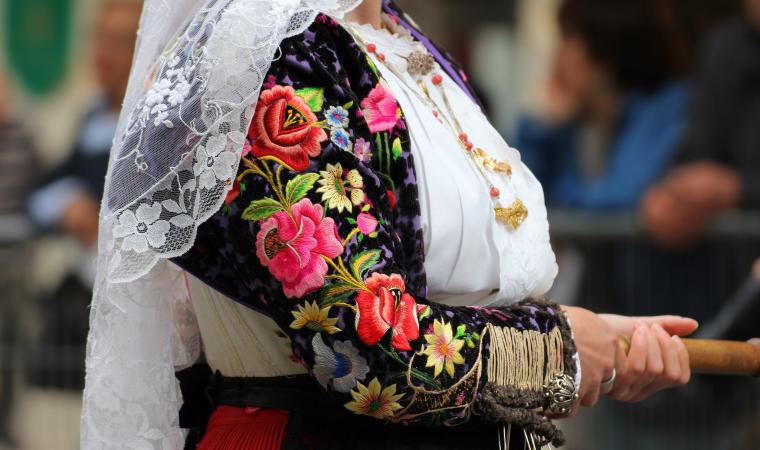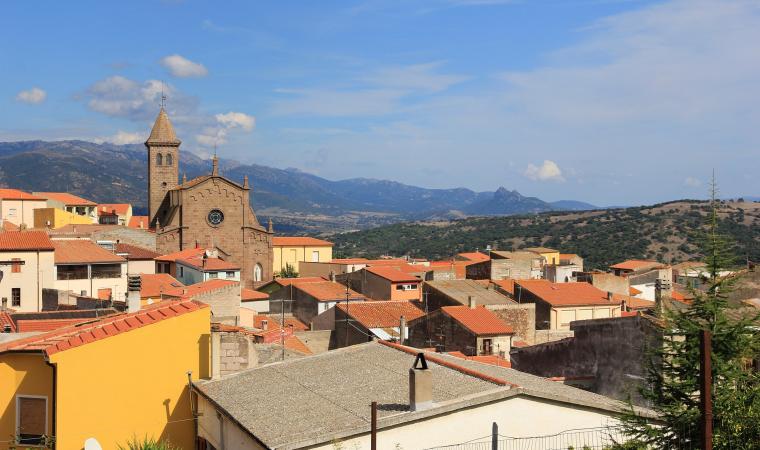A story of fire and passion. The impressive basilica of Sant'Antioco di Bisarcio stands, like a castle, overlooking the plain of Chilivani, in the territory of Ozieri, a few little kilometres from the town. Around it there is a rural village, once a flourishing centre of cultural and civil life,Bisarchium (or Guisarchum), as well as the home of the episcopal diocese. The church, which was built from volcanic rock and is ten metres high, is one of the most impressive examples of the island's Romanesque heritage. It was partly destroyed by a fire around 1090. The fire destroyed the archives: this is why we cannot establish the date on which it was founded with any certainty.
The monument, which can be reached from the strada statale no. 597 trunk road, halfway between Ardara and Tula, is the perfect combination of work by various types of craftsmanship: from Pisanand Lombard Romanesque, to French elements of Burgundy origin. When visiting the majestic building, you will be able to identify the three phases of its construction: the masonry on the east side dates back to the 11th century, while the second phase of building, after the 12th century, features well-shaped average-sized blocks. Dating back to a later period, is the portico with six cross spans on pillars and, on the upper floor, three rooms with barrel vaults. The decoration of the apse is particularly exquisite and it was divided into segments by the Pisan masters, using lesenes with a capital that has plant-like adornments and the alternating colours of the greenish tuff and the red-brown trachyte. Next to the church, on the south side, there is a bell tower, which was damaged by a collapse. It is adorned with lesenes and pensile arches, which also mark out the sides and the apse view of the basilica.
On the subject of places of worship with an extraordinary impact, you can visit another two splendid buildings nearby, in the territory of Oschiri, the church of Nostra Signora di Castro (12th century) and, in the bordering territory of Ardara, the basilica of Nostra Signora del Regno. In the surrounding area, don't miss a visit to the Castle of Monte Acuto, the Grotta of San Michele, from which the 'Oziera culture' was formed (3200-2800 BC), as well as Nuraghe Burghidu and the Ponte Romano (Roman bridge) over the Rio Mannu rivulet.

